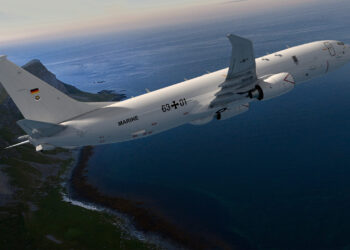European Commission,
BRUSSELS: In a report published today, the European Commission takes the first step towards establishing a comprehensive strategy for integrated maritime surveillance for Europe. The report, in the form of a Commission Staff Working Document, describes the current state of play as regards the surveillance, monitoring, tracking, identification and reporting systems put in place by EU Member States and EU Agencies. It also identifies the next steps to be undertaken and the challenges to be resolved in order to achieve an integrated maritime surveillance network for Europe.
Such an integrated and cross-sectoral network would provide essential added value for national authorities in handling a range of challenges, such as trafficking in drugs, arms and people, illegal fisheries, pollution, piracy and terrorism. Greater systems integration would also help national authorities in charge of surveillance operations become more efficient and reduce their operating costs over time.
European Commissioner for Maritime Affairs and Fisheries Joe Borg commented: “For maritime surveillance to work as well as it can, it needs to be comprehensive, cross border and cross-sectoral. We need systems which can draw on all available means. The existing obligations in this area at EU level are many and varied, and our vessel monitoring systems are increasingly sophisticated. However, they tend to monitor a specific area focusing on one single activity instead of having a overall view on the many activities that are simultaneously carried out at sea. . We need to work towards the full interoperability of the various systems, and this new working document identifies precisely what needs to be done next in order to realise that vision.”
There is already substantial sectoral cooperation taking place at both EU and national level on specific matters such as border control, maritime safety and security, as well as fisheries. Specific examples which demonstrate the potential for coordinating resources across sectoral boundaries can be found in the 2008 inspection campaign mounted by the Commission and the Community Fisheries Control Agency (CFCA) for the bluefin tuna fishery. It can also be found in the launch of EU NAVCO initiative, last September, to coordinate monitoring and action to combat piracy against EU vessels in Somali waters.
However, the Working Document concludes that further concerted work by all participants is required to move towards greater integration on a cross-sectoral level to achieve better added value and cost-efficiency benefits. Therefore, within a few months, the Commission will finance two large-scale pilot projects to evaluate how Member States can improve cross-sectoral exchange of surveillance data and carry out joint activities.
Progress towards establishing an integrated EU maritime surveillance network was one of the key objectives set out in the Action Plan for an Integrated Maritime Policy adopted by the Commission in October 2007. The present report builds on the three working documents on maritime surveillance adopted by the Commission in February of this year.









